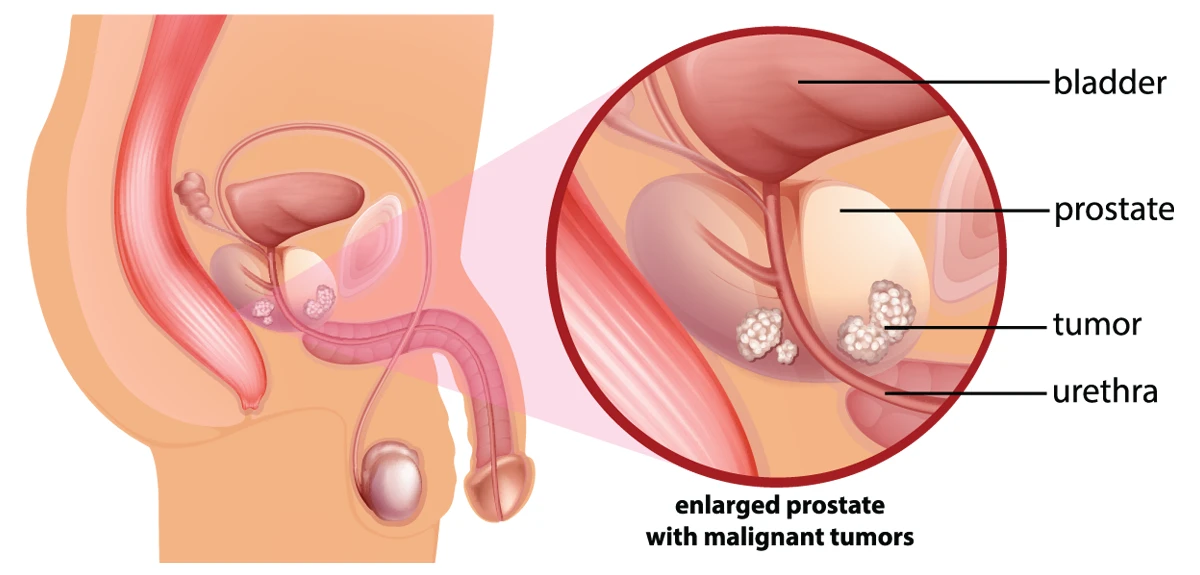Comprehensive prostatectomy services
When you’ve been diagnosed with prostate cancer, your treatment plan may include a prostatectomy, or the procedure to remove your prostate gland. At Advocate, we offer different types of prostatectomy surgery.
Find an Advocate Cancer Institute near you
What are the types of prostatectomy procedures?

Radical prostatectomy is the main type of prostate cancer surgery. During this procedure, the entire prostate is removed as well as some of the surrounding tissue, including the seminal vesicles, which help produce semen. Radical prostatectomy is performed when the cancer has not spread beyond the prostate gland.
It’s important to note that if presurgical test results indicate your cancer may have spread, the first step of your prostatectomy might be a dissection of lymph nodes in the area.
Your surgeon will discuss the right surgical technique for you depending on your cancer diagnosis. These radical prostatectomy surgery options may include open, laparoscopic or robotic surgery.
Open prostatectomy
Open surgery is the traditional technique of surgeons using instruments such as scalpels to make incisions. During an open radical prostatectomy, your surgeon will make an incision in either your lower abdomen (retropubic) or in the skin between your anus and scrotum (perineal). Then, your prostate gland and surrounding tissues are removed.
Laparoscopic prostatectomy
Laparoscopic surgery employs tiny surgical instruments inserted through small incisions. A thin tube containing a video camera is inserted in one of the incisions so your surgeon can see inside your abdomen. When used for prostatectomy, the advantages of minimally invasive laparoscopic surgery are less blood loss and pain, shorter hospital stays and faster recovery times.
Robotic prostatectomy
Robotic-assisted surgery uses the laparoscopic technique with the help of robotic arms controlled by the surgeon. This allows for more precise movements and maneuverability and also results in less blood loss and pain, shorter hospital stays and faster recovery times. At Advocate, our surgeons use the state-of-the-art da Vinci® Surgical System.
To help shorten the length of your surgery and contribute to a more successful recovery process, many surgeons prefer conducting prostatectomy procedures laparoscopically or robotically.
What are the risks of prostatectomy?
Having a prostatectomy carries some risks that are common for many surgeries such as infection, blood clots and the risk of undergoing anesthesia. Prostatectomy risks may also include:
- Urinary incontinence, or the involuntary leaking of urine
- Impotence (erectile dysfunction), or the inability to get an erection
- Loss of fertility due to removal of the seminal vesicles
- Change in orgasm (dry orgasm) due to removal of the seminal vesicles
- Change in penis length due to a shortened urethra post-surgery
- Lymphedema, or painful fluid buildup in soft tissue
What to expect when getting a prostatectomy
With around 90,000 prostatectomy procedures performed in the U.S. every year, this surgery is common and safe. Learn about what you can expect before and after this procedure.
Before your prostatectomy
Depending on your surgery, you’ll either get general anesthesia, which induces sleep where you don’t feel pain, or sedation and localized numbing to the lower half of your body through spinal or epidural anesthesia. You can expect your prostatectomy to take between two and four hours.
After your prostatectomy
Within a few days after surgery, your care team will remove the drain that was inserted to remove extra fluid from the area (if you received one). The catheter put in place during surgery to drain pee from your bladder will remain for a few days to a few weeks. If you have laparoscopic or robotic prostatectomy, you may be released from the hospital the day after your procedure. Most people return home within four days after prostatectomy.
Caring for yourself after prostatectomy
To promote blood flow to the area, you’ll likely be encouraged to be up and walking the day after surgery. This also helps prevent blood clots and other complications. It’s important to follow post-surgical instructions and recovery tips once you’re discharged from the hospital. These may include:
- Asking a friend or family member to drive you home
- Having a friend or family member available to take care of you for a few days
- Taking pain medications, antibiotics or stool softeners as prescribed
- Cleaning and drying the surgical site adequately
- Allowing the incision(s) to heal by not performing heavy lifting or rigorous exercise
What is life like after prostatectomy?
Within a few weeks or months, most people find their bladder function has gradually returned to normal. Talk with your care team about incontinence treatments if this issue persists months after your prostatectomy.
Due to damaged nerve endings, it’s a common side effect of prostatectomy to experience erectile dysfunction. You may still be able to have an orgasm without loss of sensation even if you can’t get an erection. It may also take months to a few years before you feel your sexual function has fully returned. Learn more about treatments for urologic conditions
You can expect to have regular checkups so your care team can monitor your condition after prostatectomy. If your original diagnosis warrants additional therapies to prevent your cancer from spreading or recurring, your care team may suggest including chemotherapy, radiation or hormone therapy as part of your treatment plan.
Get care
We help you live well. And we’re here for you in person and online.
